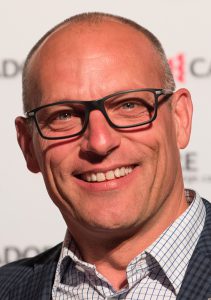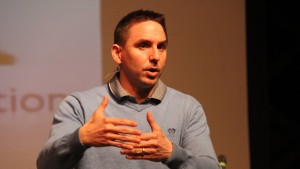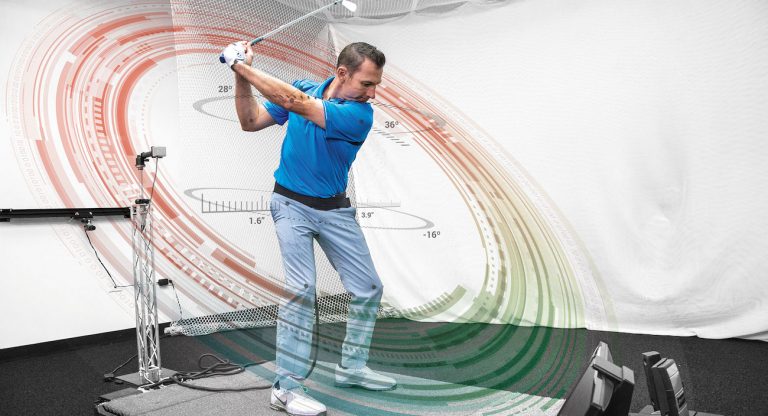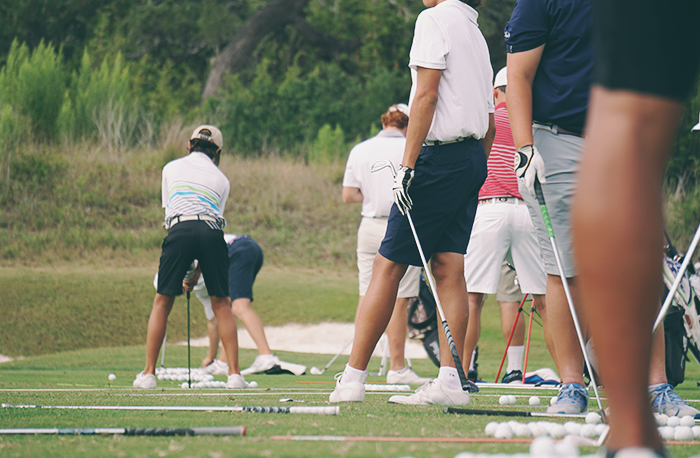On this podcast we recap some of the latest interesting research that’s taking place and recap the 2018 World Scientific Congress of golf.
[vc_row][vc_column width=”1/2″ css=”.vc_custom_1489366056001{margin-bottom: -30px !important;}”][vc_btn title=”LISTEN IN ITUNES” align=”center” button_block=”true” link=”url:https%3A%2F%2Fitunes.apple.com%2Fus%2Fpodcast%2Fgolf-science-lab%2Fid1049039619%3Fmt%3D2%26ign-mpt%3Duo%253D4||target:%20_blank|”][/vc_column][vc_column width=”1/2″][vc_btn title=”LISTEN IN GOOGLE PLAY” align=”center” button_block=”true” link=”url:https%3A%2F%2Fplay.google.com%2Fmusic%2Fm%2FIqibmivc622az2cffwftwonz3mm%3Ft%3DGolf_Science_Lab||target:%20_blank|”][/vc_column][/vc_row]
Topics we recap and cover in this episode:
1 – Dr Sasho MacKenzie’s insightful keynote looking at the the causes of club head speed from a mechanistic standpoint. Practical look at why Bubba Watson and Tony Finau both hit it incredible far with very different golf swings.
2 – The effect of grip size and if a larger grip actually makes the golf go more right… or if that’s just a myth.
3 – Can we do corrective exercises to improve posture and does that lead to improved performance on the golf course?
4 – What effect does water on the golf ball have on distance? New research has the answer.
5 – The impact of putter grip and putter design on the delivery of the putter head to the golf ball.
About Glenn Cundari
 Glenn Cundari takes pride in making an impact on people through sport, and he has used coaching and coach education as a vehicle to do so.
Glenn Cundari takes pride in making an impact on people through sport, and he has used coaching and coach education as a vehicle to do so.
As past President, and current Technical Director of the Professional Golfers Association (PGA) of Canada, as well as a National Coaching Certification Program (NCCP) Master Learning Facilitator, Cundari’s work with the NCCP has led him to speak about golf instructor and coach development around the world. He is a member of the PGA World Alliance Education Committee, and is a Member of the PGAs of Europe Golf Development Team. Recently Glenn completed the ICCE/NCDA International Coach Developer Academy in Tokyo.
At home, he is also a valuable asset in golf development as the technical lead on initiatives including Long Term Player Development for Golf in Canada, Canada’s national junior program, Special Olympics golf coach training and the National Golf in Schools Program.
About Dr Sasho MacKenzie
 Dr. MacKenzie completed a PhD in Sports Biomechanics at the University of Saskatchewan, which focused on 3D forward dynamics simulation of the golf swing.
Dr. MacKenzie completed a PhD in Sports Biomechanics at the University of Saskatchewan, which focused on 3D forward dynamics simulation of the golf swing.
He is currently an associate professor in the Department of Human Kinetics at St. FrancisXavierUniversity and his research interests lie in the optimization of human movement with a strong emphasis on sport performance.
His research encompasses both optimal sport movement patterns as well as the most advantageous training techniques. He has conducted, presented, and published research on putting, shaft dynamics, 3D mechanics of the swing, shoe fitting, and the role of center of pressure in the golf swing.
My research interests are centered on the optimization of human movement in sport. My current research endeavors range from optimizing the biomechanics of athlete training techniques to customizing the properties of the golf club to a player’s swing.
My approach to solving problems on the optimization of human movement is founded on the development of forward dynamic models. Recently I have been programming genetic algorithm routines to determine the optimal timing of muscle activation patterns in my human models.
This Episode’s Sponsor
YEARS OF RESEARCH AND DESIGN IN THE MAKING; THE EDEL SINGLE LENGTH SYSTEM SLS-01 IRONS ARE NOW HERE. SIMPLIFY YOUR GAME.
Traditional logic enforces the notion that variable length irons are correct and that smart people before us deciphered the most accurate way to play the game. Yet, few have questioned the reason why our clubs variate in length.
Ockham’s Razor is a scientific technique or discovery tool to guide researchers and scientists which states Among competing hypotheses, the one with the fewest assumptions should be selected. In golf terms, a set of clubs that allows the player to maintain a single ball position, swing plane, and rhythm rate would provide the logical explanation to achieve optimal performance.
All with a club that has singularity of length, weight, bounce, shaft weight, and shaft flex to optimize the simplicity of repeating your ideal swing.
SIMPLIFY YOUR GAME. SINGLE LENGTH. SINGLE SWING.



